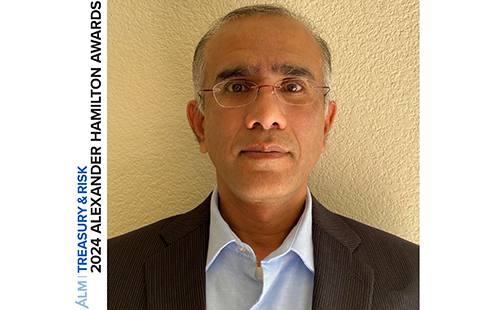
Microsoft does business in nearly every country around the world, with more than 400 legal entities generating over $200 billion in annual revenue. To repatriate earnings back to the United States from abroad, most subsidiaries issue dividends to the parent company each year. This process is crucial because it ensures that excess cash is available for use by Microsoft corporate, rather than languishing in bank accounts overseas.
"We do cash concentration whenever possible, but that concentrated cash still belongs to the subsidiaries," explains Edda Kuhlmann, senior treasury manager with Microsoft. "To make those funds available to corporate, we use the dividend." The dividends are particularly important for subsidiaries in countries that restrict participation in Microsoft's centralized cash-pooling structures.
Recommended For You
For more than a decade, Microsoft's treasury group has coordinated the dividend process using an internally developed tool called STAT. "The STAT tool is part of a robust internal control system used by Microsoft's internal audit, tax, cash management, and legal teams," Kuhlmann says. "It monitors the status of statutory compliance for all our legal entities and houses financial statements, audit opinions, and management letters. It also provides source data such as filing dates, contacts, AGM [annual general membership meeting] information, and tax filing requirements for each entity around the world."
A subsidiary's local controller enters into STAT both a maximum dividend allowed, which is based on retained earnings as demonstrated on the subsidiary's financial statements, and a proposed dividend amount, which takes into consideration factors such as local bank balances and expected future cash flows. Then the treasury group works with the controller to reach consensus on the final dividend amount.
A few years ago, the once-vanguard tool began to seem inefficient compared with more modern technologies. For one thing, STAT's limited reporting meant that the cash management team tracked subsidiary dividend declarations and payments in an Excel spreadsheet. The process was manual, labor-intensive, and prone to data-quality problems.
"If a controller misunderstood what a certain field on the intake form meant, they might cause a problem," Kuhlmann says. "For example, one field indicated whether the dividend had been paid. Sometimes foreign controllers would mark that in advance based on their expectation for when the dividend would be paid. But that field was supposed to be completed by the cash management team, and only after the dividend had been paid. Because we were overseeing the process with a spreadsheet, we could not see who entered what data, and we might assume the dividend was complete—only to find out well after the fact that it was never actually paid."
Another issue with the legacy tool was that it was unable to store emails, Teams messages, and phone calls, which accounted for much of the communication when treasury had a question about a local controller's proposed dividend. The U.S.'s Tax Cuts and Jobs Act of 2017 made this even more challenging by increasing the complexity of multinational tax law, thus boosting the need for timely coordination between tax and treasury.

"The Tax Cuts and Jobs Act totally changed how U.S. entities look at dividends from abroad," Kuhlmann says. "As a result, Microsoft's tax team needed to be much more involved in the dividend process, and we needed an audit trail for all the communications around that."
Kuhlmann and her team set out to develop a more user-friendly, flexible process for setting annual subsidiary dividends. They wanted to be sure the process would give stakeholders sufficient time to review and sign off on their respective milestones, while also capturing discussions in a clear audit trail. The cash management group partnered with Microsoft's STAT and tax teams, organizing meetings, identifying and documenting pain points, designing and suggesting new process flows, and providing guidance on improving STAT's reporting capabilities. Then the STAT group rebuilt the tool from the ground up using Microsoft frameworks and Azure cloud-native components.
The new and improved STAT tool integrates several data points into one data pool accessible by all stakeholders. This eliminated the need for treasury to track the dividends in spreadsheets and enabled the team to build reports that pull in an assortment of relevant information. For example, new reports show dividends received by fiscal year and comparison with years past; forecasted upcoming dividend payments by entity, country, and currency; average time between dividend declaration and payment; and an overview of maximum allowable dividend vs. dividend actually paid, by entity, with an explanation of the delta between the two numbers.
This version of STAT is also a purpose-built project management tool. When an entity uploads its draft financial statements, automated workflows collect and route dividend information. Those workflows vary depending on the entity and regulations within its country. "Some entities that do not have much going on might have just three steps before the dividend is paid," Kuhlmann says. "Other entities—in Europe or Japan, for example—have to go through a lot of different steps before the financial statements are completed. All those steps are managed through this tool."
The entity's financial controller still enters a maximum dividend and proposed dividend, and STAT automatically notifies Microsoft's tax and treasury groups to review them. "Generally, a subsidiary cannot pay a dividend that is more than its profit for the year or the retained earnings plus the profit for the year, depending on the country," Kuhlmann says. "Treasury checks each entity's proposed dividend to make sure it's realistic. Sometimes entities will want to pay too much and will fail to consider their cash flows. Other times, they will want to pay too little because they are thinking about upcoming expenses. We will work with them, if needed, to determine the correct amount.
"And then, once everybody agrees on a dividend, there's a dropdown menu to explain what happened," she continues. "All the information we need is at the tool level: It can track who said what, why the dividend amount changed, and how everybody eventually agreed on the final amount."
See also:
- Gold Award—Ford Motor Company: "A Treasury Group That's Accelerating Investments in Sustainable Transportation"
- Bronze Award—Hunt Companies: "Pushing Treasury APIs That Will Make the Industry Better"
Equally important for a company with more than 400 foreign subsidiaries, much of the work that used to be manual is now automated. Application programming interfaces (APIs) created through Microsoft Graph connect STAT to related solutions to streamline data sharing, and PowerBI reports give internal audit and other stakeholders the information they need about subsidiary dividend decisions.
"After the entity's controller and corporate treasury agree on the dividend, STAT goes through all the other steps that are needed to finalize the entity's financial statements," Kuhlmann reports. "The dividend must be declared at the AGM where the financial statements are accepted. The dividend payment can happen only after the AGM is held."
Human data-entry errors are no longer an issue, and the efficiency of the process enables cash to be repatriated much more quickly, accelerating its availability to support Microsoft's strategic needs. "When you have 400-plus subsidiaries, even when small entities are paying a dividend that's only in the tens of thousands of dollars, it adds up," Kuhlmann adds. "Now we have these funds available to Microsoft sooner than we otherwise would."
In addition to the substantial improvements in transparency and accountability, the changes to STAT increased the platform's stability, speed, privacy, and data security. Today the tool requires virtually no manual maintenance, whereas the legacy version consumed 25 percent to 40 percent of a full-time employee's time. And Microsoft's spending on the STAT solution fell by about half.
"Communication was key to our success with this initiative," Kuhlmann says. "We involved a lot of stakeholders from different areas of Microsoft across around 140 countries. As we planned the upgrades to STAT, we had to keep in mind that stakeholders in different countries sometimes have different versions of Microsoft's goals. We were very mindful of how we communicated, down to how we phrased certain things for the controllers. And the final dividend process has a lot of nuances, to ensure that it really works for the business in each country."

© Touchpoint Markets, All Rights Reserved. Request academic re-use from www.copyright.com. All other uses, submit a request to [email protected]. For more inforrmation visit Asset & Logo Licensing.



